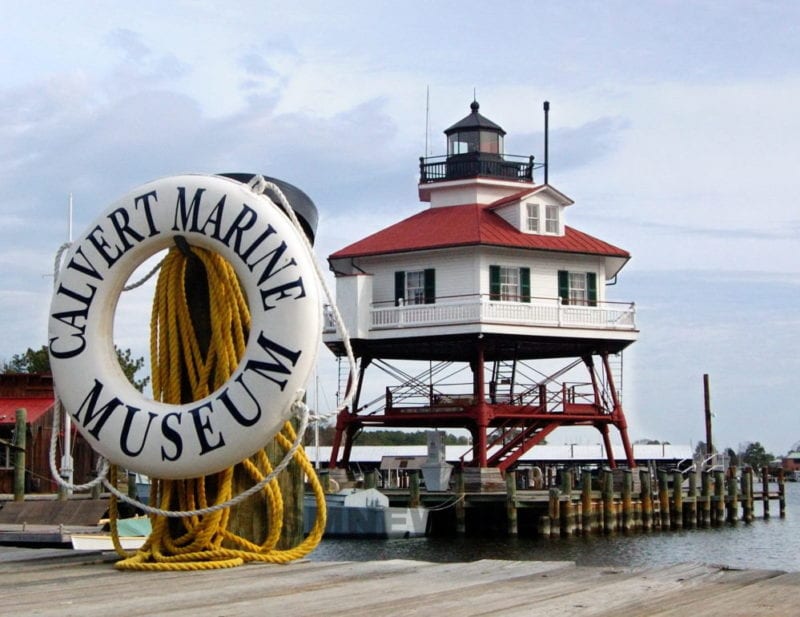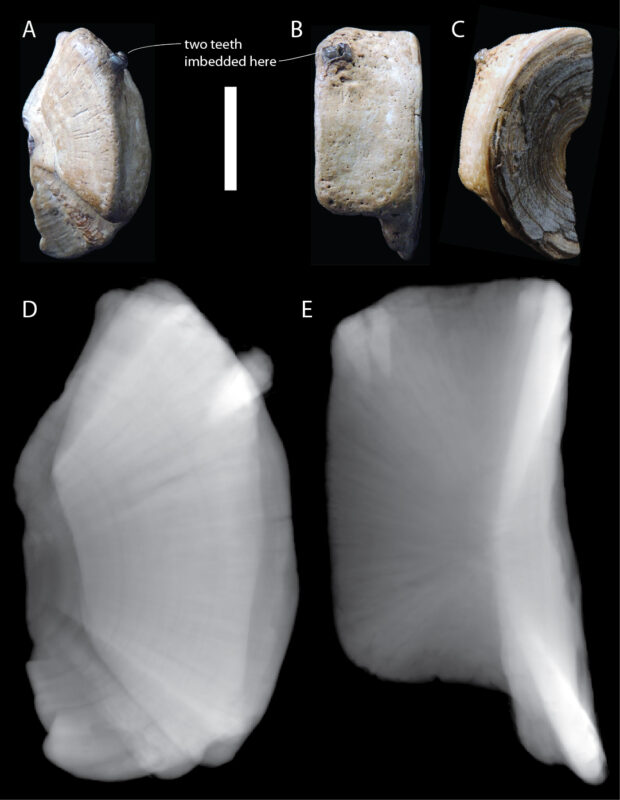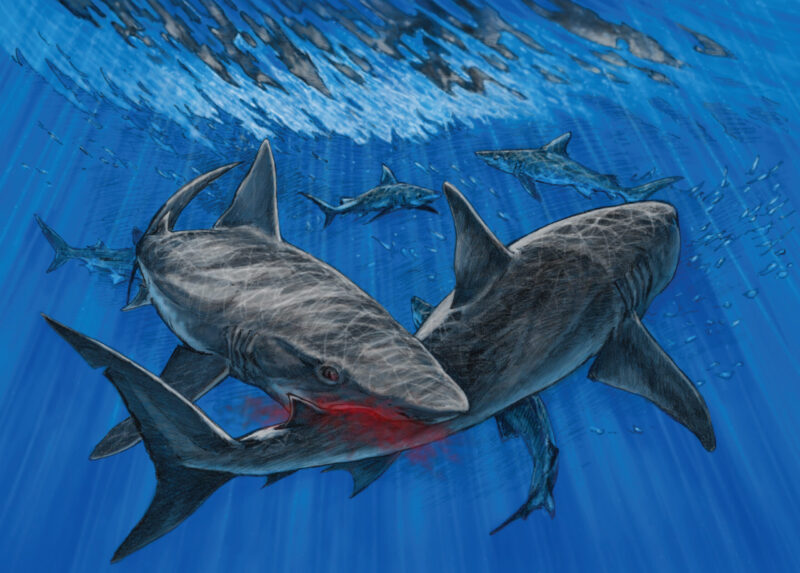 Calvert Marine Museum’s paleontologists, Drs. Victor Perez and Stephen Godfrey, have just published a paper in the journal Acta Palaeontologica Polonica entitled: “Rare evidence of shark-on-shark trophic interactions in the fossil record.” This study was co-authored by Dr. Phillip Chapman from Johns Hopkins University.
Calvert Marine Museum’s paleontologists, Drs. Victor Perez and Stephen Godfrey, have just published a paper in the journal Acta Palaeontologica Polonica entitled: “Rare evidence of shark-on-shark trophic interactions in the fossil record.” This study was co-authored by Dr. Phillip Chapman from Johns Hopkins University.
In modern marine ecosystems, sharks are known to prey upon other sharks, and in some cases will even cannibalize the same species. We rarely see evidence of this feeding behavior in the fossil record, and yet bite traces from sharks are commonly observed on fossil bones of whales and dolphins. So, why do we not find more evidence of sharks preying upon other sharks in the fossil record?
The answer is the composition of their skeleton. Sharks have a skeleton composed primarily of prismatic cartilage, which is a soft-tissue that decomposes much faster than bone. As a result, cartilage does not preserve as often as bone, but there are exceptions in which the environmental conditions are just right to preserve this delicate material. And in extremely rare circumstances, these cartilaginous skeletal elements will preserve bite traces, either made when animals were scavenging the carcass or during active predation (Figure 1).
This new study describes four fossil requiem shark vertebrae that possess bite traces, most likely originating from other sharks. In fact, two of the specimens actually have broken shark teeth still embedded in the fossil vertebrae. These exceptionally rare fossils represent the first documented occurrences of bite traces preserved on fossil shark vertebrae, offering definitive evidence of shark-on-shark predation and/or scavenging in the fossil record.
One specimen, CMM-V-2700, is particularly unique, as CT-scans revealed healing around the embedded shark teeth. This implies that the bitten shark survived the encounter. In other words, this fossil preserves a failed predation event between two requiem sharks (Figure 2).
Two of the four specimens described in this study are currently on display at the Calvert Marine Museum in the new exhibit, Sharks! Sink your teeth in! Come visit the museum to see them in person.

Figure 1. Requiem shark vertebra, CMM-V-2700. A, articular cross-sectional view; B, lateral view; C, articular view; D, CT-scan in articular view showing the two shark teeth embedded in and protruding from the upper quadrant of the centrum; E, CT-scan in lateral view showing the same two shark teeth embedded in the centrum. Scale bars equal 1 cm.

Figure 2. One possible way in which the shark centra (CMM-V-2700) could have been bitten. This illustration depicts an active predatory encounter between two requiem sharks (aff. Carcharhinus sp.). Original drawing by Tim Scheirer. Coloration added by Clarence Schumaker.


